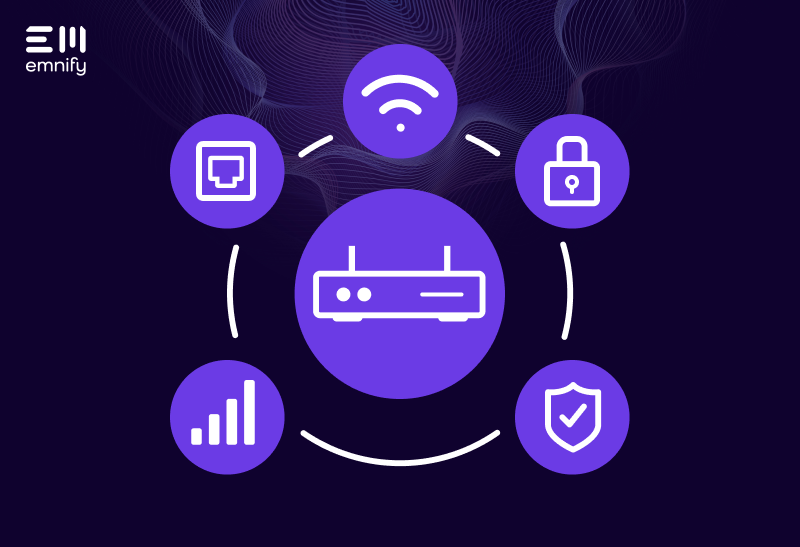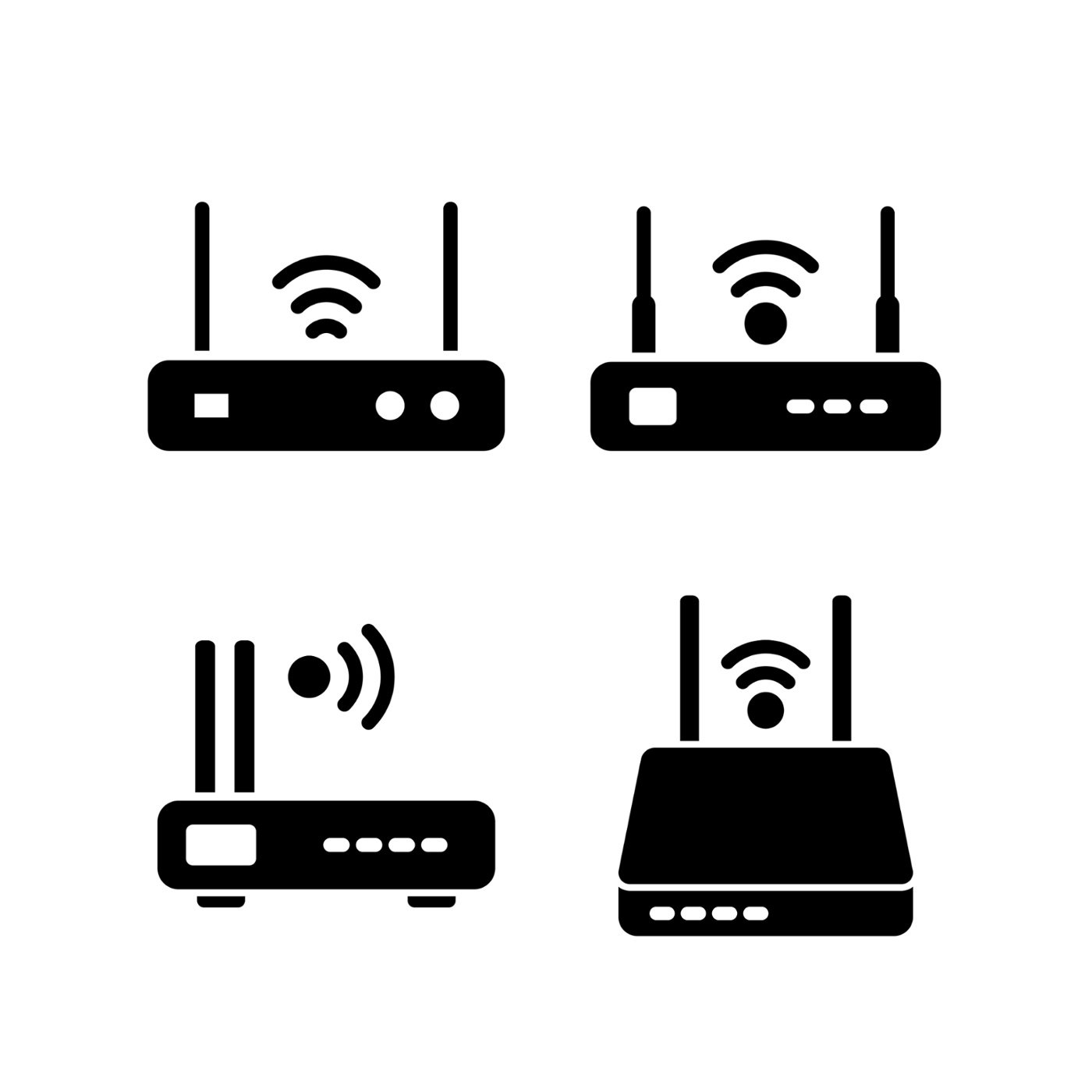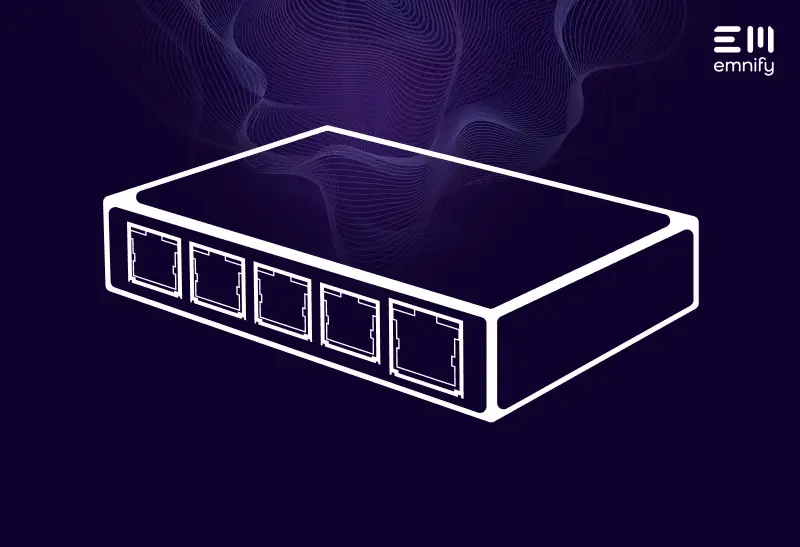

Quick definition: An IoT router is a piece of network infrastructure that directs data packets to and from your IoT devices. It connects a local network to the Internet, enabling devices from one network to communicate with devices on another. Unlike a traditional consumer router, IoT routers typically come with managed connectivity, stronger security, better support, and multiple connectivity options.
Whether you’re an Internet of Things (IoT) manufacturer or a business that relies on IoT devices, it’s crucial to understand the difference between a commercial-grade IoT router and the typical routers you’ll find at a consumer electronics store. For example, in oil & gas fields, manufacturing facilities, or other Industrial IoT (IIoT) applications, there’s too much at stake to risk losing connectivity or creating network vulnerabilities by using the same tech a consumer might have in their home.
Still, it’s surprisingly common for IT professionals to grab a consumer-grade router off the shelf and use it on a sensitive factory network. It’s a fast, cheap solution to a basic need, but this leaves you vulnerable to ongoing security risks, unprepared for connectivity failures or implementation problems, unable to control and analyze your connectivity, and stuck with the same support as consumers.
This glossary article will discuss the importance of an IoT router and what sets it apart from a traditional router.
How important is an IoT router for my IoT application?
IoT routers are overkill for a smart home, but they’re essential for any business that relies on IoT.
A network is only as secure as its weakest link. Using a consumer grade router on an otherwise secure network is like a bank vault with a screen door. Over time, as new vulnerabilities are discovered, that router will likely become outdated and pose a greater risk, giving hackers more ways to break into the entire network. IoT routers offer greater security capabilities and can easily be updated to address new vulnerabilities. And with cybersecurity becoming increasingly legislated, you may even be legally required to use more secure hardware.
Operations that depend on IoT applications can’t afford downtime. Try to use a traditional router in a commercial IoT application, and you’re stuck relying on the end user’s network infrastructure to keep your IoT devices connected. If the ethernet or Wi-Fi fails, everything is offline until the problem can be fixed. IoT routers come with redundant connectivity options to ensure there’s always a backup and minimize the disruption failures cause to operations.
Managed connectivity is crucial. An IoT router comes with a connectivity management platform that can add network-level security and give you more control over your connectivity and related costs. You can do things like:
- Order SIMs and manage SIM contracts
- Control and monitor your available networks
- Define and regulate your devices’ data consumption
- Enable support teams to troubleshoot connectivity issues
- Change tariff profiles
Now, let’s look into some of the specific differences between an IoT router like what you’d find with specialized providers like Cisco, Phoenix Contact, or Cradlepoint, versus the router you might get from your home Internet provider.
What makes an IoT router different from a normal router?
A router still serves the same network function for IoT devices that it does for desktops, laptops, and mobile devices. So it’s understandable that someone might think they’re essentially the same. But with IoT, connectivity is mission-critical, so IoT routers need more advanced capabilities and more involved vendor partnerships.
Here are some key differences between an IoT router and a normal router.
Multiple connectivity options
In IoT, redundancy is vital. Even a fraction of a percent of downtime can come at an enormous cost, and the more backup solutions you have in place, the more uptime you can guarantee. Consumer routers are typically limited to one or two connectivity options, such as ethernet or wifi. But since the stakes are higher with industrial applications, IoT routers from manufacturers like Cisco, Phoenix Contact, or Cradlepoint are capable of adding additional options such as cellular. This is where businesses often choose to add emnify’s global IoT SIMs to their IoT routers.
Not only does this ensure there’s always a backup ready in case of a failure in the primary connection, but it makes these devices more versatile for remote deployments where there may not be hardwired or wifi solutions available. In these instances, the router can simply switch to using a cellular connection.
This can also help when an end user (or their IT department) has reservations about adding devices to their internal network. Using cellular connectivity allows your router to securely route data packets for your IoT devices without relying on the customer’s network infrastructure.
Managed IoT connectivity
When you have potentially thousands of devices sending and receiving packets through a router, you and your customers need deeper insights into and control over data consumption, costs, and connectivity processes. An IoT router, when bolstered with a solution like emnify, gives end users a convenient dashboard that provides visibility into their connected devices and data usage.
Additionally, IT teams can use this same management platform to remotely access your devices (in this case, the IoT routers) to push firmware updates and close holes in security as they’re discovered.
Specialized IoT support
The vast majority of technical support for traditional routers is devoted to consumers and more common business applications. Good luck finding relevant technical articles, resolving your support tickets, or getting an IoT expert on the phone. But use an IoT router, and all of the manufacturer’s customers are businesses with challenges and applications like yours. Talking through your issue won’t be uncharted territory.
Choose your IoT router, then get connected with emnify
As a cellular IoT connectivity provider, emnify is router-agnostic. We want you to have quality equipment to support your IoT devices, but it doesn’t matter to us if your routers come from Cisco, Cradlepoint, Phoenix Contact, or another vendor. We enable these devices to connect to secure cellular networks around the world as a backup solution or the default option for remote applications.
So choose the best router for your business—and just make sure it’s an IoT router, not something you’d use in your home office.
Want to learn more about what cellular connectivity can do for your IoT application? Talk to an IoT expert.
Get in touch with our IoT experts
Discover how emnify can help you grow your business and talk to one of our IoT consultants today!

Joe is an experienced engineer in the field of telecommunication systems, applications and IoT. He is currently supporting the sales team for all things technical and is a valued member of the emnify family.


